The art of making the perfect Kuih Kapit (love letters)
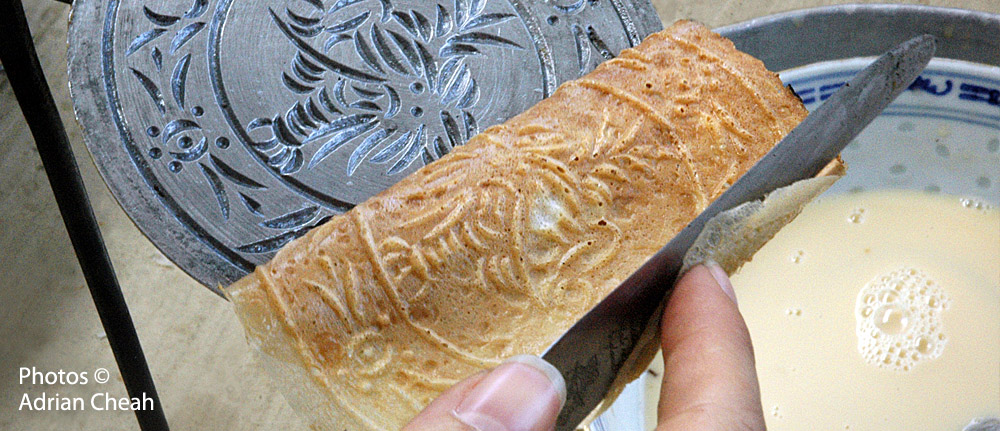
Some believe that oysters hold aphrodisiac qualities, while others claim that the tomato, known as pomme d'amour – French for "love apple" – is the true food of love. In Penang, however, there is a delicacy that, despite its romantic name, is neither an aphrodisiac nor a token of affection. Yet those who have tasted it often wax lyrical over its aromatic, sweet and lemak goodness. The "love letter", more commonly known as Kuih Kapit, is a popular favourite, particularly during the Chinese New Year.
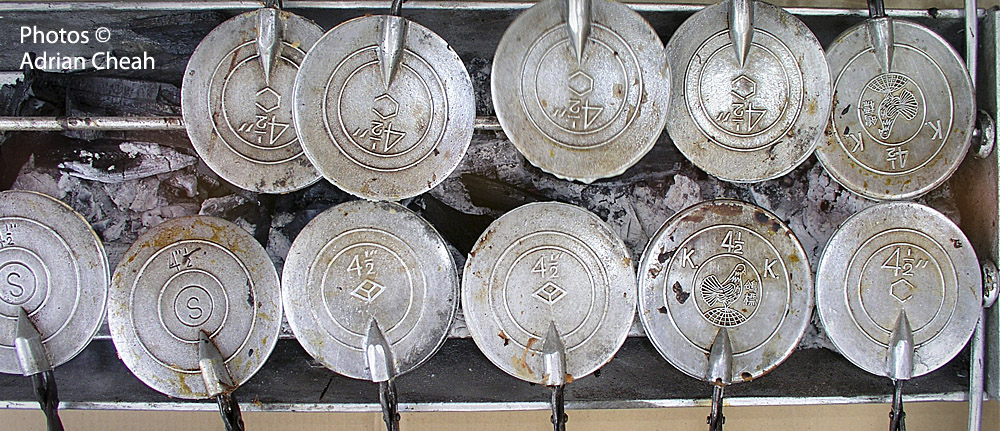
"Kapit" in Malay means "clamped", a reference to its method of preparation. A smooth batter is poured onto a hot, circular aluminium mould, typically 4.5 inches in diameter and often engraved with intricate floral or auspicious Chinese motifs. The mould is clamped tightly and cooked over flaming charcoal, a process that gives the biscuit its signature thin, crispy texture and distinctive imprints. Once cooked, the delicate biscuit is quickly folded in half, then into quarters, forming a fan shape. Its paper-thin texture is light and crisp but fragile, requiring careful handling. With its golden-brown hue, subtle sweetness and fragrant hints of coconut milk, pandan and smoky undertones, Kuih Kapit is simply ho1-ciak1 ka1 siau4 (so delicious, it is downright insane!).
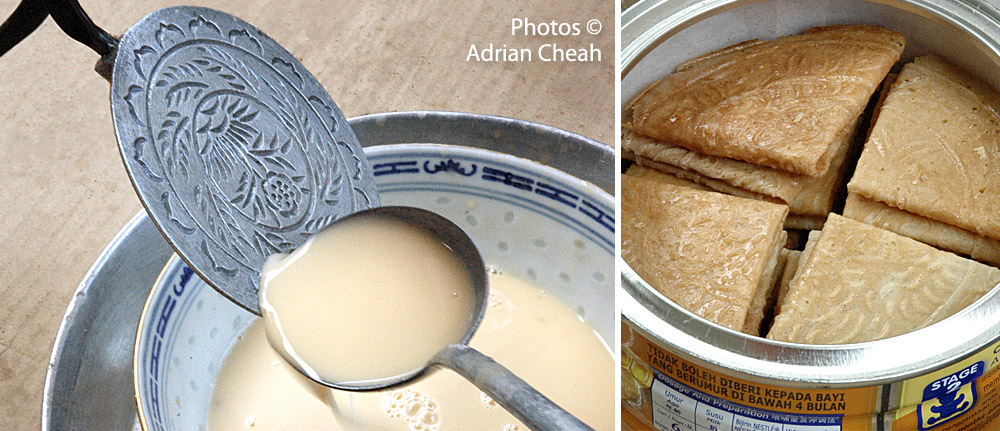
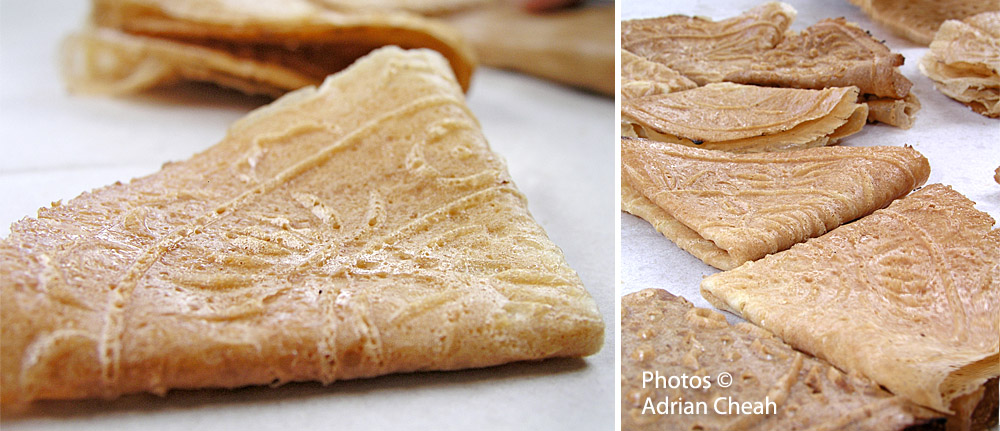
"Co1 cin1 khan3-khor4, ciak1 cin1 eng2", (Hokkien for "to make is so very difficult, to eat is so very easy") sums up Kuih Kapit in a colloquial yet apt manner. While those labouring over the charcoal stove sweat in focused determination, younger family members eagerly wait on the sidelines, ready to snap up the delicate biscuits and gobble them up. This labour of love yields more than a delicious treat – it strengthens familiar bonds, turning Kuih Kapit into a tradition that is cherished far beyond its flavour.
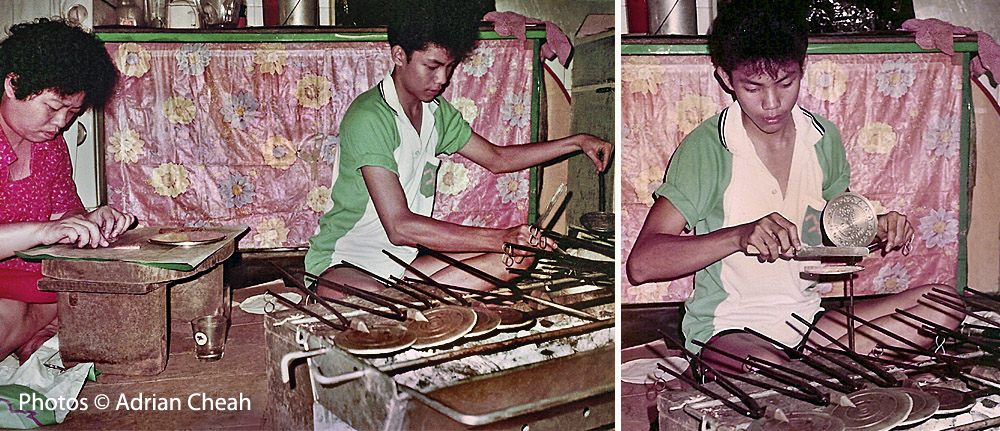
Photos taken in 1985: I cannot help but laugh at my skinny 17-year-old self with an 80s hairdo that screams "fashion craze of the decade", making kuih kapit. Mum, with her endless list of relatives and friends to sang3 cnia1, had a gifting marathon so legendary that even 50 Milo tins fell short!
Making Kuih Kapit was once a cherished tradition in the Cheah household. When I was a child, up to my teenage years, the house would come alive with the bustle of my eight siblings, all working together to turn what could have been a laborious task into a joyful family affair. The saying, "many cooks spoil the broth", never applied here; instead, it was the shared effort that made the work light.
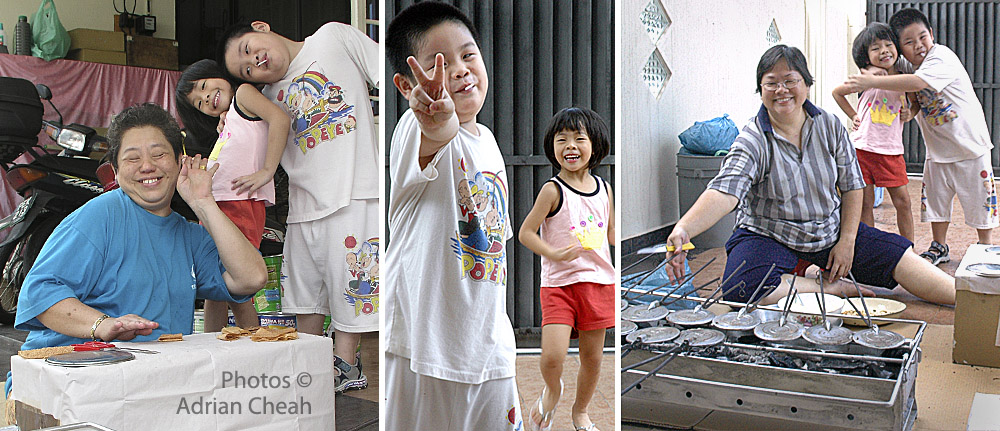
Photos taken in 2008:
Left: My eldest sister, Elizabeth, with my daughter, Jean and my nephew, Michael – both born just two days apart.
Right: My late sister, Sandra, who was the heart and soul behind coordinating these cherished cookie-making sessions after taking the reins from Mum.
Every Chinese New Year, we would gather eagerly around the hot charcoal stove, catching up on gossip and swapping stories as we made Kuih Kapit. The sweet, coconut-rich scent filled the air, wrapping the house in a warm, inviting aroma. In true Cheah family fashion, nothing was ever done in moderation – our Kuih Kapit sessions stretched from sunrise to sunset, sometimes spilling over into a second day. By the end, the heat from the charcoal fire seemed to seep into our very bones, radiating warmth well into the night. Those were the good old days. But as time passed, life shifted. Marriages, new beginnings, and the inevitable passage of time gradually scattered the family, and with it, the cherished Kuih Kapit tradition faded into rarity. Now, only once in a blue moon do we rekindle those moments, often with the younger generation of the Cheah family by our side, carrying forward the legacy of this labour of love.
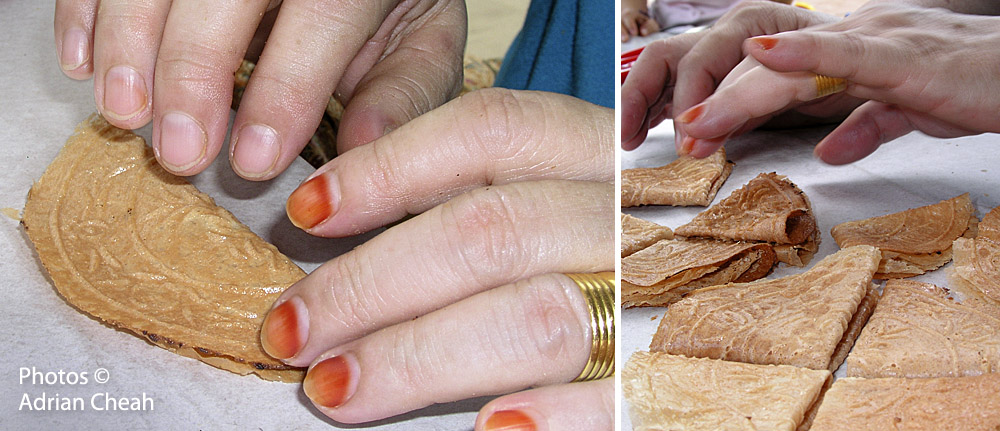
The "chief" cook juggles multiple tasks – minding the fire, flipping the moulds, mixing and pouring the batter, cooking each piece to a perfect golden-brown hue, and trimming any run-off batter before passing off the cook piece to the assistant. The assistants must then quickly fold the biscuits while it is still hot and pliable as it hardens almost instantly after leaving the hot mould. Experienced hands always pick the "nice side" to face outward because presentation is everything. The "sopak" (blotchy, unevenly coloured), darker and "pucat" (pale) pieces? Straight to the kids' tin – because kids don’t care, right? The quality control was "gila" – no way Mum was losing face by gifting anything less than perfect. Once cooled, the biscuits are arranged like soldiers in air-tight tins, ready to impress! Now I understand why I am the walking definition of OCD.
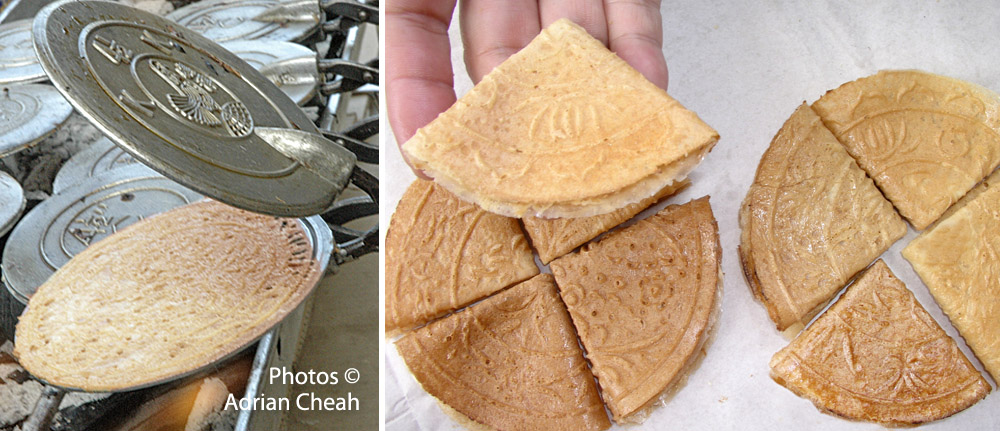
In the past, Kuih Kapit was made exclusively using aluminium moulds over charcoal fires, which required constant attention to maintain consistent heat. Today, modern two-moulded electric Kuih Kapit makers are available, streamlining the process and making it accessible to younger generations. However, traditionalists insist that the smoky flavour imparted by charcoal fire is irreplaceable, preserving the authenticity of this delicacy.
If you are inspired to try making this traditional delight at home, here is a Kuih Kapit recipe to guide you.
Ingredients
- Sieve together 250 g rice flour and 2 tbsp tapioca flour
- 300 g sugar
- 10 medium-sized eggs
- 400 ml fresh, unadulterated coconut milk (from 2 grated coconuts)

Method
- Combine all the ingredients in a large mixing bowl. Stir with a wire whisk until the sugar dissolves. Strain the batter and let it stand for an hour. For large batches, store portions of the batter in the refrigerator to prevent fermentation. If the batter thickens, thin it with water.
- Heat the love letter mould over a charcoal grill, keeping the fire moderate and consistent to ensure even colouring.
- Lightly grease the mould with cooking oil before pouring the batter for the first time.
- When sufficiently hot, pour a ladleful of batter onto the mould. Close it tightly and bake over the charcoal fire for about half a minute on each side, depending on the fire. Trim the run-off batter with a butter knife before opening the mould to check the colour.
- Once the biscuit turns golden, remove it and quickly fold it into quarters or roll it, depending on preference.
- Once the biscuits have cooled, store them in an airtight container or tin lined with tracing paper.
Kuih Kapit variations
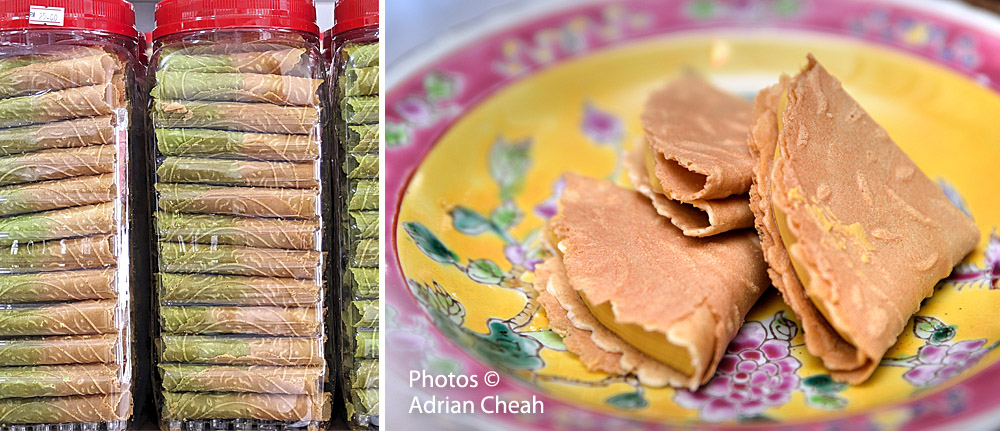
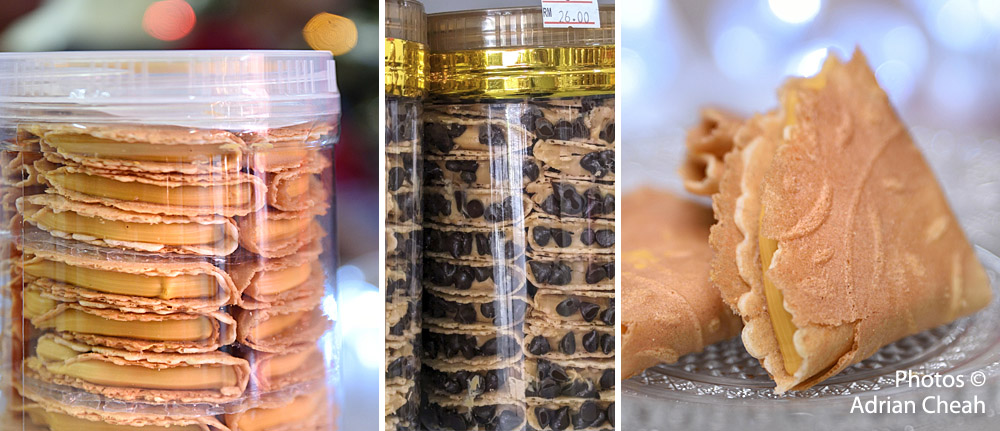
Modern adaptations of Kuih Kapit have introduced a variety of fillings, including bahu (pork floss), peanut butter, chocolate, and kaya (coconut jam). Some also infuse the batter with pandan leaf extract or matcha, giving it a green hue, or add cocoa powder for a richer brown colour. These contemporary twists cater to evolving palates while still preserving the biscuit’s traditional charm. Despite these innovations, many argue that nothing compares to the original recipe – simple yet deeply satisfying. During the festive season, Kuih Kapit is widely available in market places, hypermarkets, and pop-up stalls throughout Penang, making it accessible to locals and visitors alike who wish to savour this delightful treat.
-------------------------------------
Written and photographed by Adrian Cheah
© All rights reserved
Updated 16 January 2014